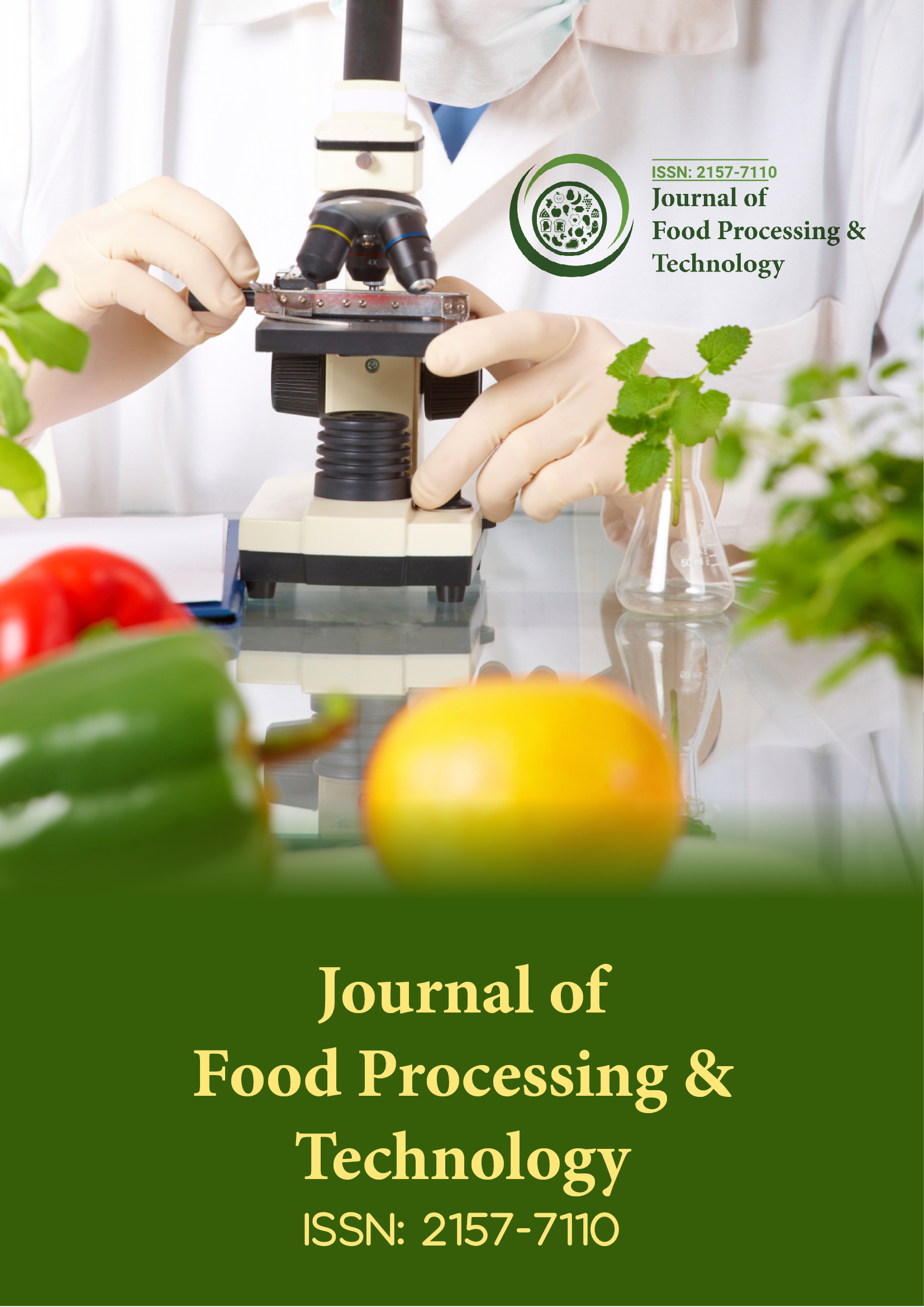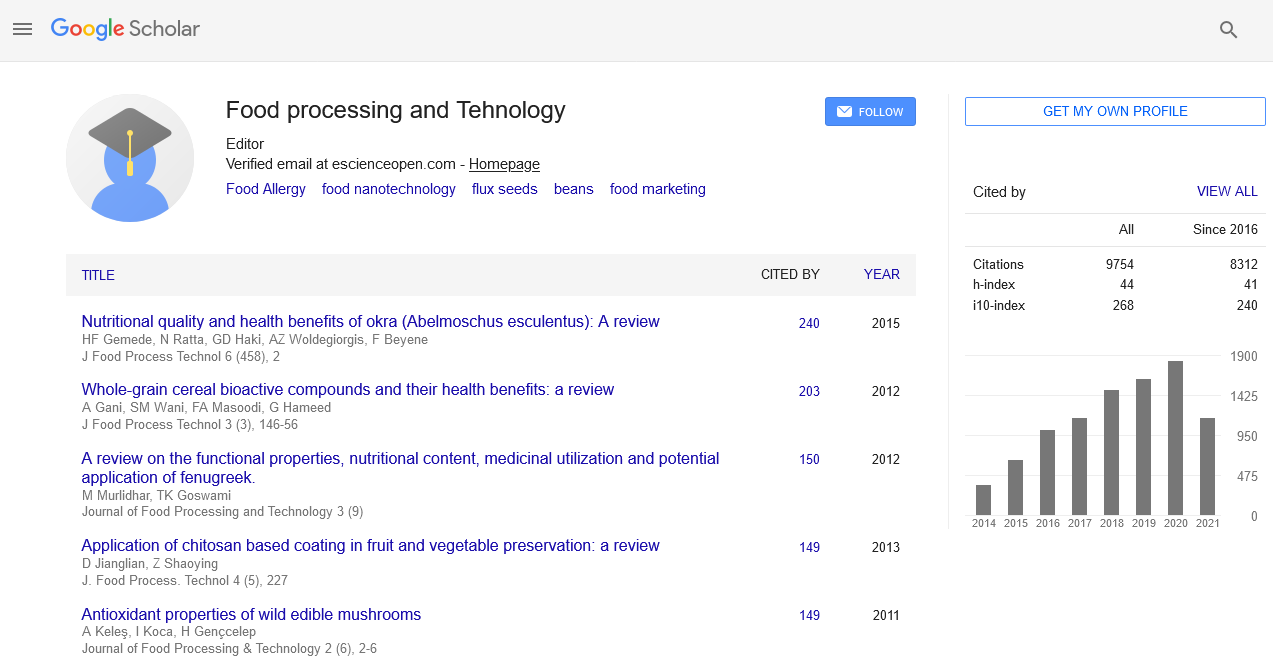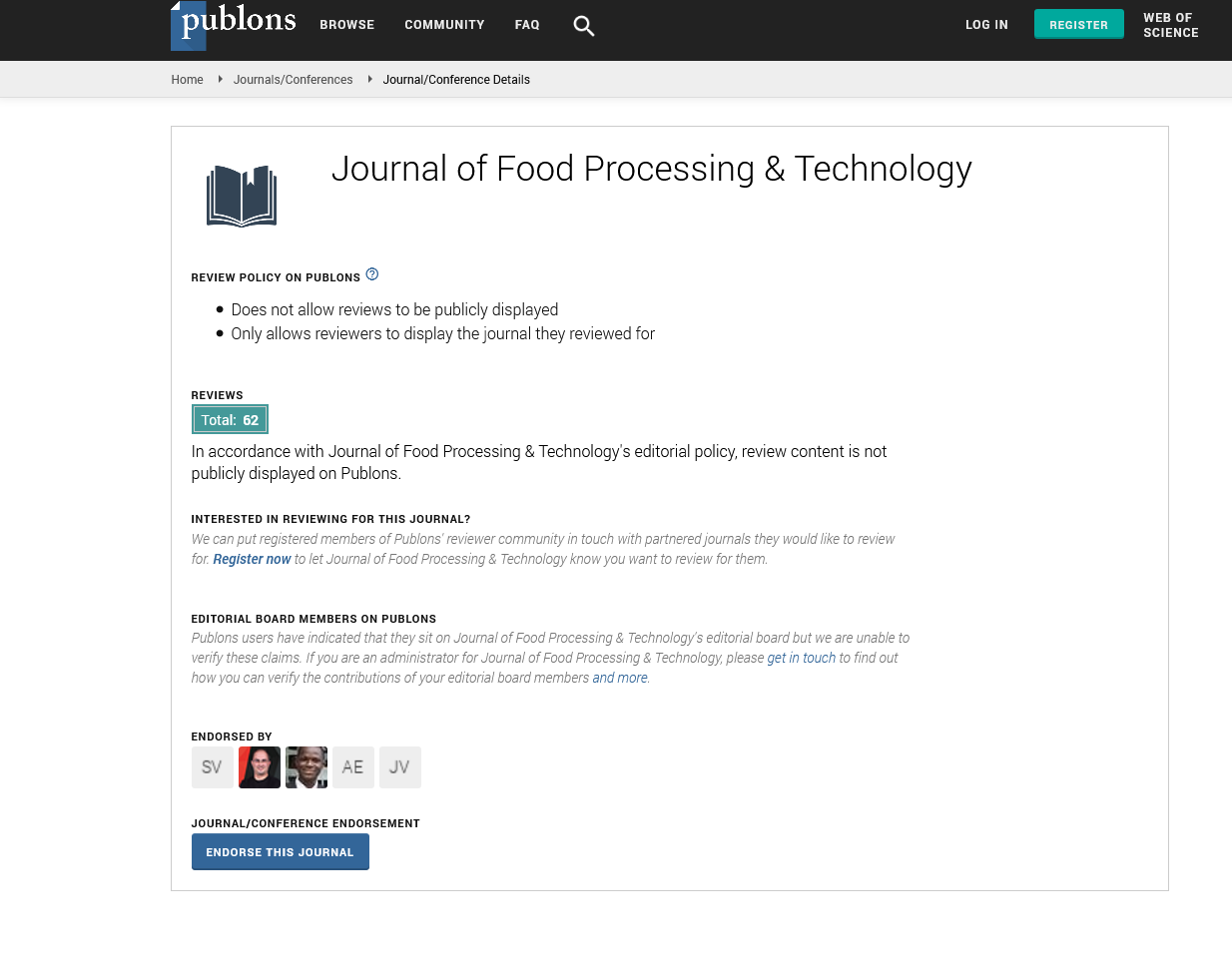Indexed In
- Genamics JournalSeek
- Academic Keys
- JournalTOCs
- China National Knowledge Infrastructure (CNKI)
- Access to Global Online Research in Agriculture (AGORA)
- Centre for Agriculture and Biosciences International (CABI)
- RefSeek
- Directory of Research Journal Indexing (DRJI)
- Hamdard University
- EBSCO A-Z
- OCLC- WorldCat
- Scholarsteer
- SWB online catalog
- Publons
- Euro Pub
- Google Scholar
Useful Links
Share This Page
Journal Flyer

Open Access Journals
- Agri and Aquaculture
- Biochemistry
- Bioinformatics & Systems Biology
- Business & Management
- Chemistry
- Clinical Sciences
- Engineering
- Food & Nutrition
- General Science
- Genetics & Molecular Biology
- Immunology & Microbiology
- Medical Sciences
- Neuroscience & Psychology
- Nursing & Health Care
- Pharmaceutical Sciences
Perspective - (2025) Volume 16, Issue 1
Impact of Thermal Processing on Nutritional Quality of Vegetables
Kenji Saito*Received: 27-Jan-2025, Manuscript No. JFPT-25-29165; Editor assigned: 29-Jan-2025, Pre QC No. JFPT-25-29165; Reviewed: 12-Feb-2025, QC No. JFPT-25-29165; Revised: 18-Feb-2025, Manuscript No. JFPT-25-29165; Published: 26-Feb-2025, DOI: 10.35248/2157-7110.25.16.1141
Description
Thermal processing is a widely used method in food technology to ensure safety, extend shelf life and enhance the palatability of vegetables. It involves subjecting food to high temperatures through techniques such as boiling, steaming, blanching, pasteurization, roasting and frying. While thermal processing is essential for the inactivation of pathogenic microorganisms and enzymes that cause spoilage, it also has a significant impact on the nutritional quality of vegetables. This impact can be both beneficial and detrimental, depending on the processing method, temperature, duration and type of vegetable involved.
One of the primary concerns regarding thermal processing is the loss of heat sensitive nutrients, particularly vitamins. Water soluble vitamins such as vitamin C (ascorbic acid) and the B-complex group (especially thiamine and folate) are highly susceptible to degradation when exposed to heat. Among these, vitamin C is the most sensitive and can experience reductions of up to 50% or more during boiling or prolonged cooking. Similarly, thiamine, which plays a crucial role in energy metabolism, is also degraded under high temperatures. The extent of nutrient loss is often exacerbated by the leaching effect, where vitamins dissolve into the cooking water and are subsequently discarded, especially in boiling or blanching methods.
In contrast, some thermal processes can enhance the bioavailability of certain nutrients and phytochemicals. For instance, the thermal breakdown of cell walls and cellular matrices can release compounds such as beta carotene, lycopene and lutein, making them more accessible for absorption in the human digestive tract. This is particularly relevant for carotenoid rich vegetables like carrots, tomatoes and spinach. In tomatoes, for example, thermal processing significantly increases the concentration and bioavailability of lycopene, a powerful antioxidant associated with reduced risk of cardiovascular disease and certain cancers. Similarly, cooking carrots can enhance the release and uptake of beta carotene, a precursor to vitamin A.
Minerals such as calcium, iron, magnesium and potassium are generally more stable during thermal processing. However, leaching into cooking water can still result in substantial losses, especially when vegetables are boiled. The mineral content may also be affected by the degree of processing and the physical changes that occur in the vegetable matrix. While steaming and microwaving tend to retain more minerals compared to boiling, frying can lead to both nutrient losses and the introduction of excessive fat, which may offset the health benefits of the vegetable.
The impact of thermal processing on dietary fiber is more complex. Cooking can alter the physical structure of fiber, affecting its solubility and functionality. In some cases, heat treatment can improve the digestibility of dietary fiber by softening plant cell walls, thereby aiding in gastrointestinal function. However, excessive processing may lead to a breakdown of fiber components, reducing their physiological benefits such as cholesterol reduction and glycemic control. Additionally, the changes in texture and taste resulting from thermal processing can influence consumer acceptance and intake of fiber rich vegetables.
Another area of interest is the effect of thermal processing on phytochemicals, which include a wide range of bioactive compounds such as flavonoids, polyphenols, glucosinolates and tannins. These compounds are known for their antioxidant, anti-inflammatory and potential anti-carcinogenic properties. The response of phytochemicals to heat is highly variable. For example, thermal processing can lead to the degradation of polyphenols in vegetables like broccoli and green beans. However, in some cases, the mild heat treatment can enhance the extractability and activity of these compounds. The enzymatic degradation of glucosinolates during heating can reduce the formation of beneficial compounds like sulforaphane in cruciferous vegetables, though certain processing techniques, such as steaming, help preserve these bioactives better than boiling.
The method and duration of thermal processing play a critical role in determining the nutritional outcome. Steaming is widely considered one of the most effective methods for preserving vitamins and phytochemicals in vegetables. It minimizes contact with water and uses relatively lower temperatures and shorter cooking times compared to boiling or frying. Microwaving, when done properly, also retains high levels of nutrients due to minimal cooking time and limited water usage. In contrast, prolonged boiling and deep frying often result in higher nutrient losses and may also lead to the formation of harmful compounds such as acrylamide and trans fats, particularly when oils are reused multiple times.
Modern food processing technologies are exploring ways to optimize thermal treatments to minimize nutrient losses while ensuring food safety and quality. Techniques such as sous vide cooking, infrared heating and ohmic heating are being investigated for their ability to uniformly cook vegetables at controlled temperatures, thereby preserving a greater proportion of heat sensitive nutrients and functional compounds. Additionally, the integration of thermal processing with non-thermal techniques such as high-pressure processing or pulsed electric fields holds promise for retaining nutritional quality while enhancing microbial safety.
Citation: Saito K (2025). Impact of Thermal Processing on Nutritional Quality of Vegetables. J Food Process Technol.16: 1141.
Copyright: © 2025 Saito K. This is an open access article distributed under the terms of the Creative Commons Attribution License, which permits unrestricted use, distribution and reproduction in any medium, provided the original author and source are credited.


